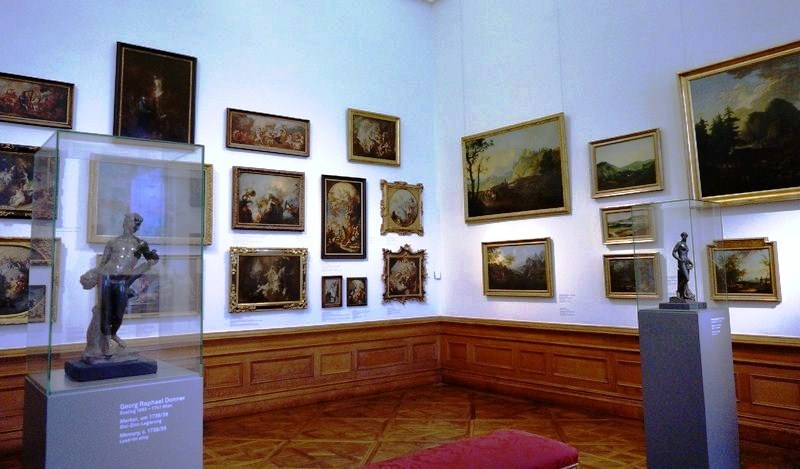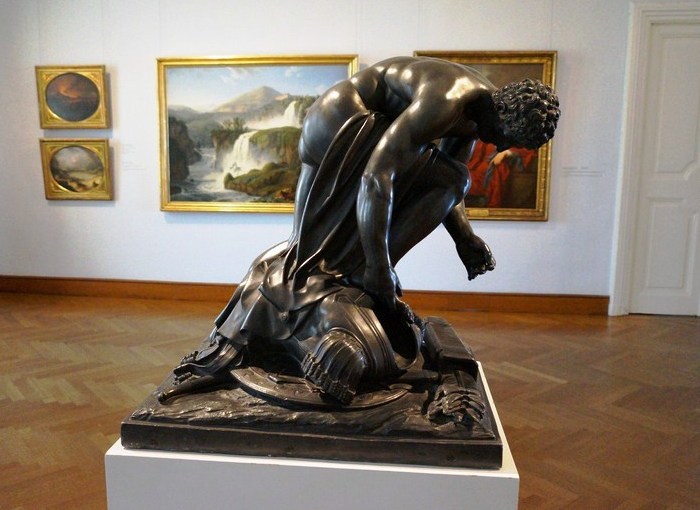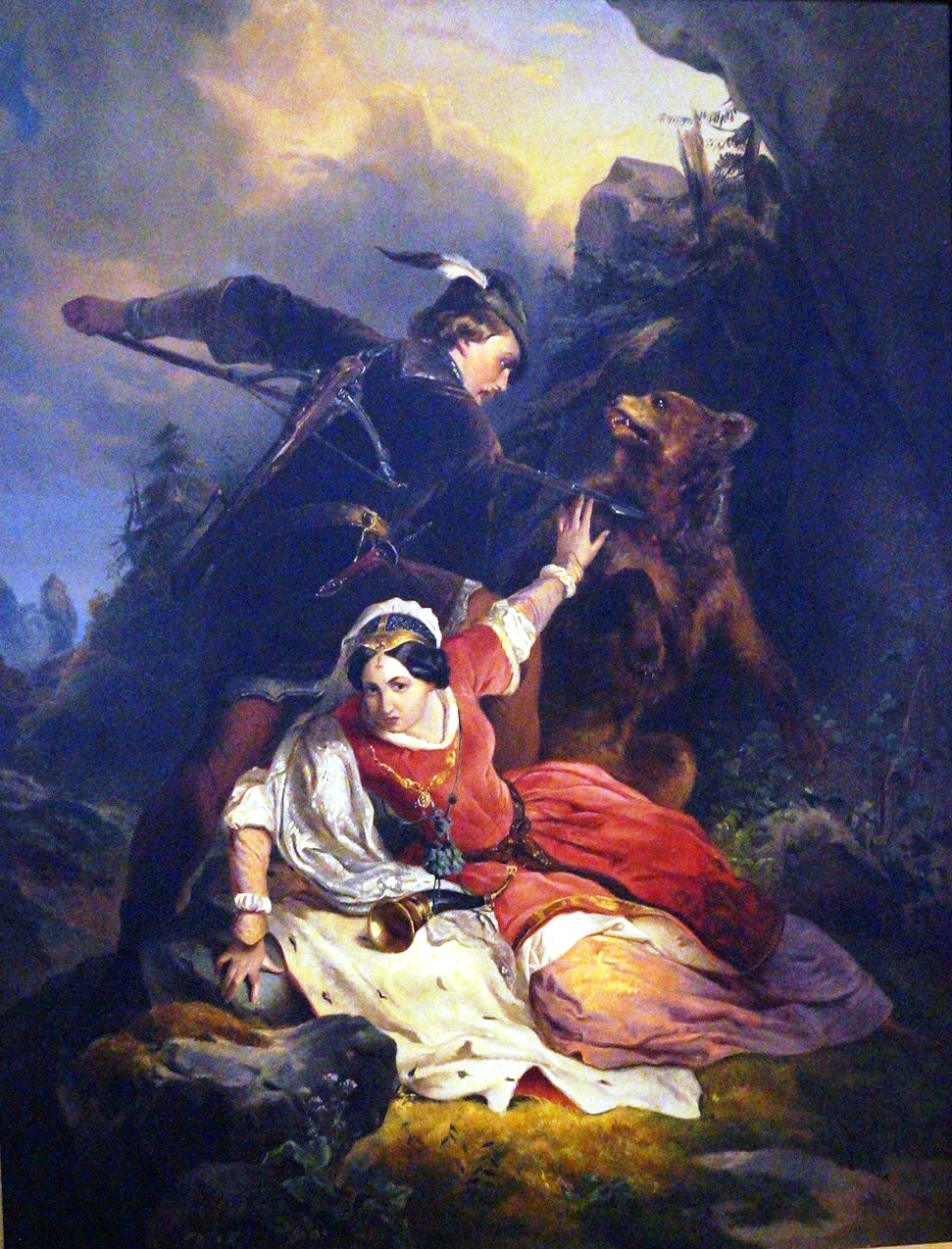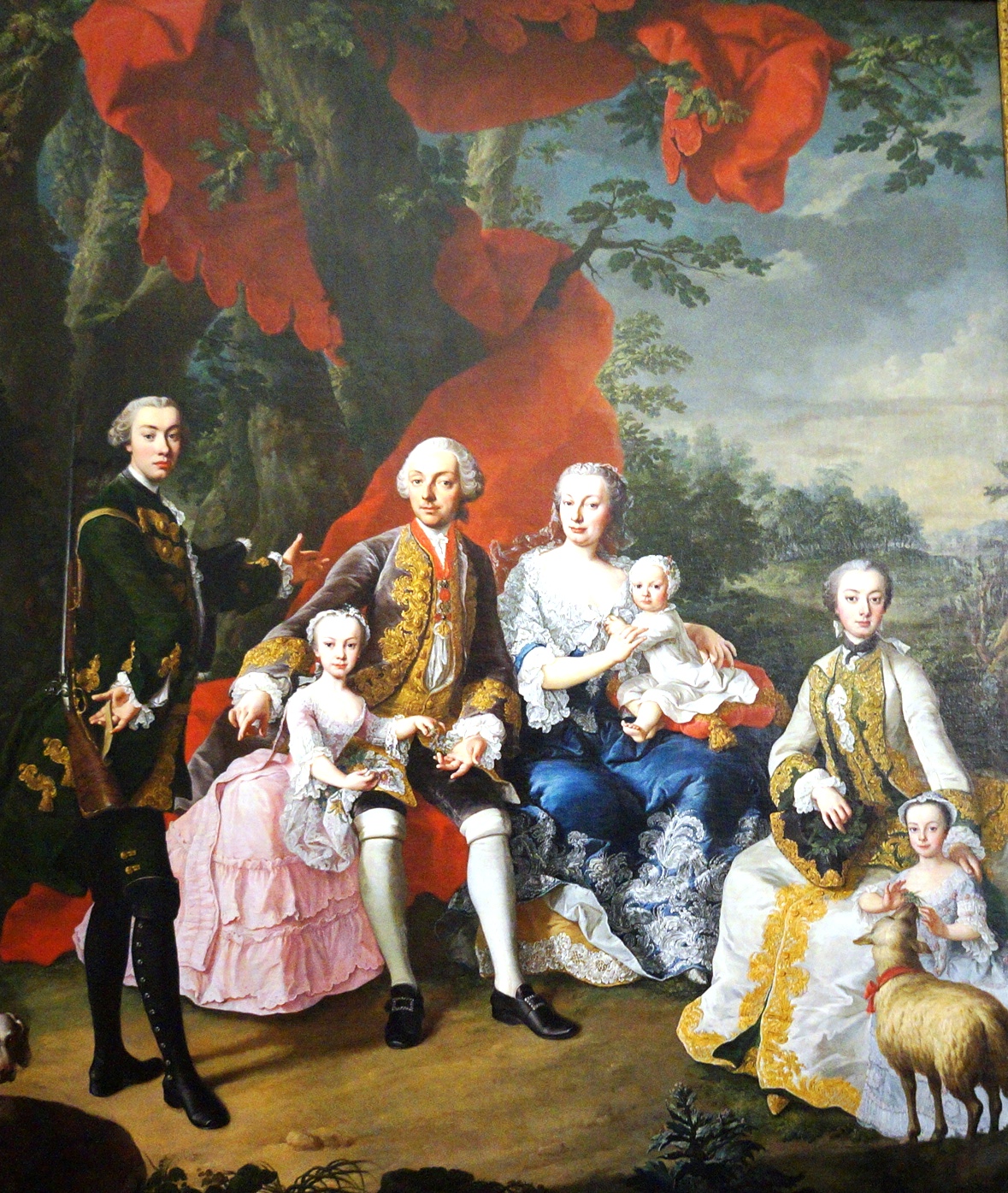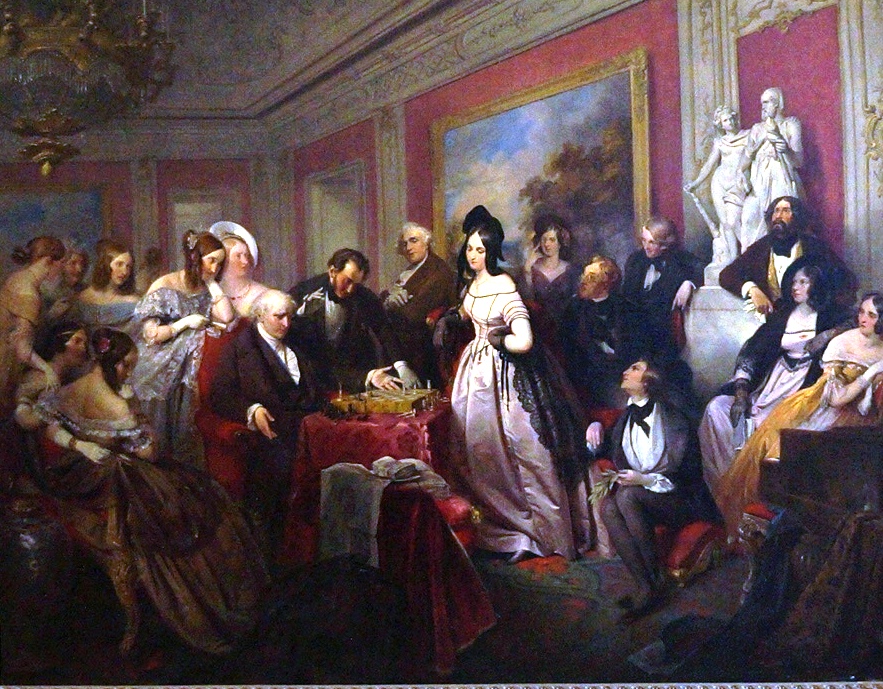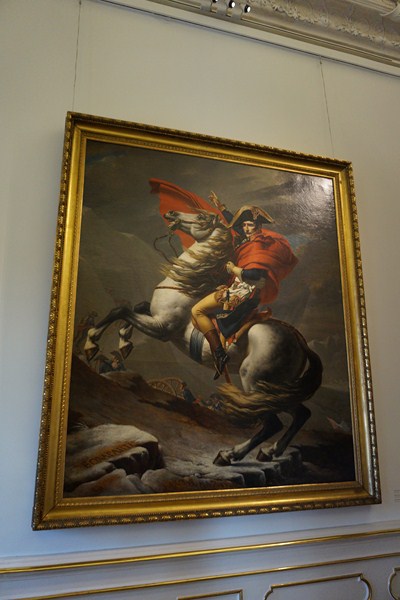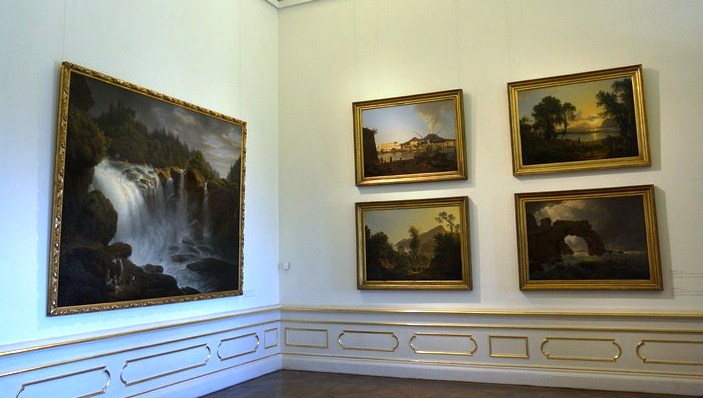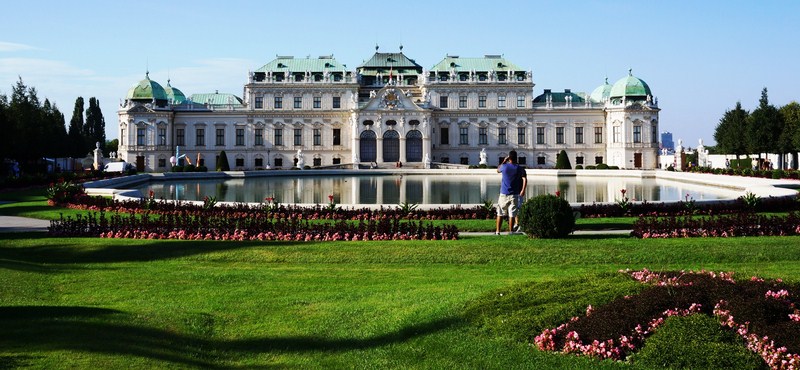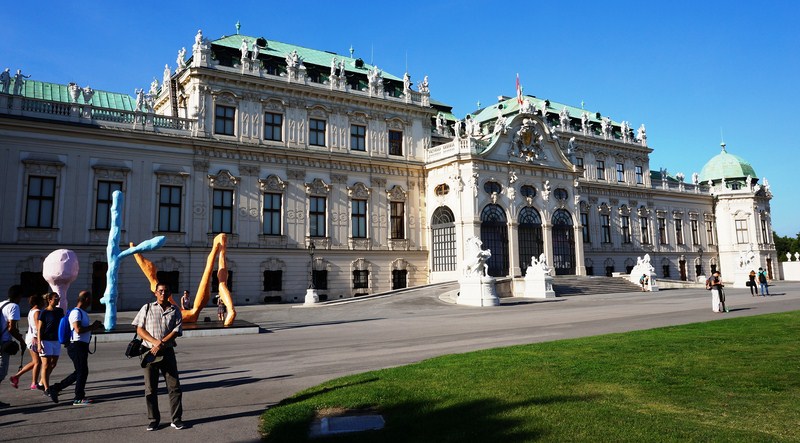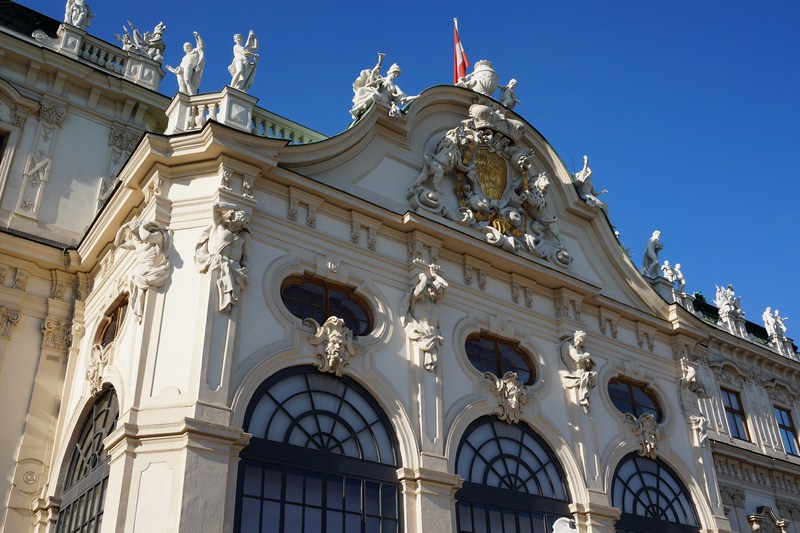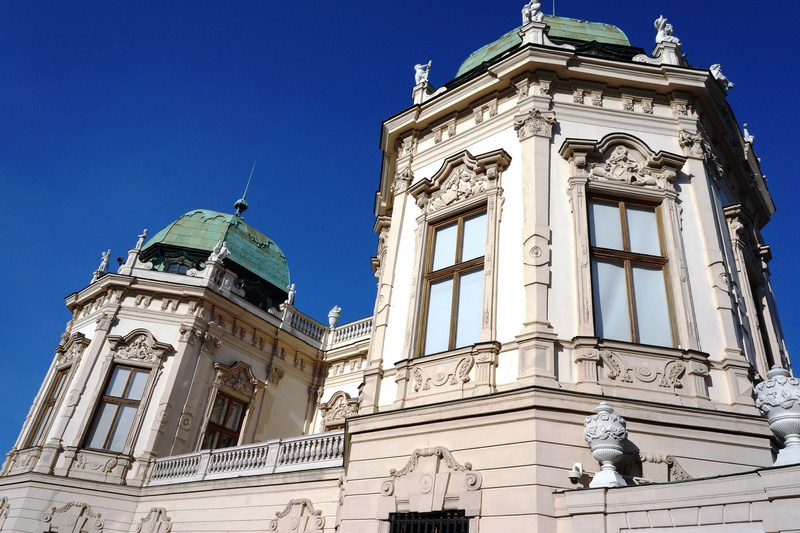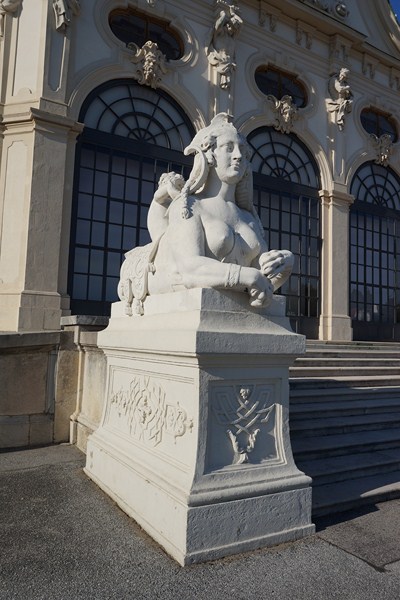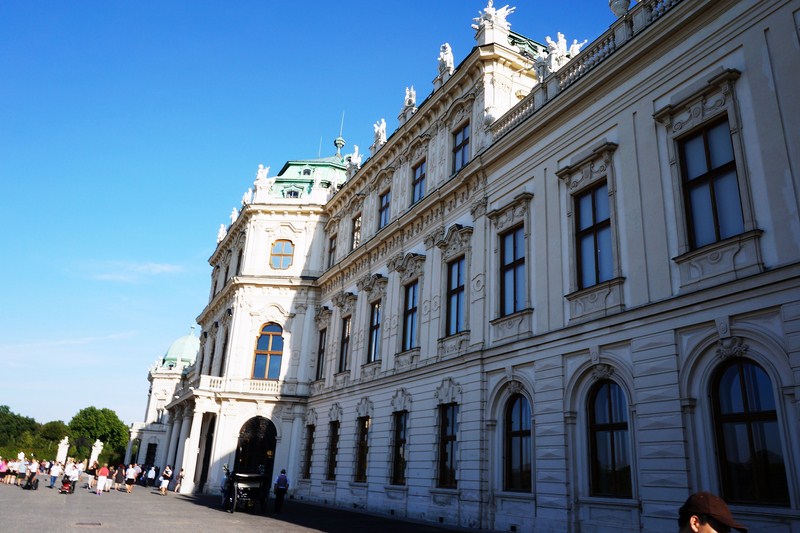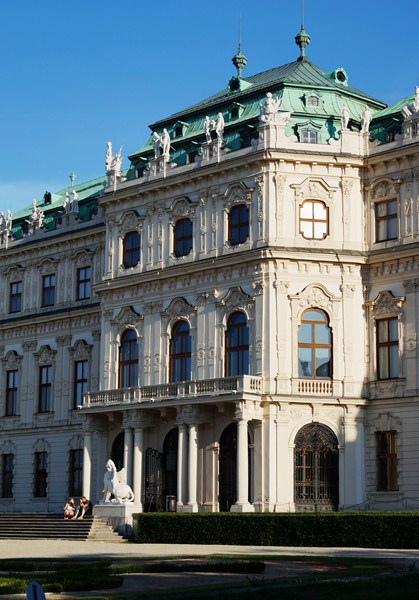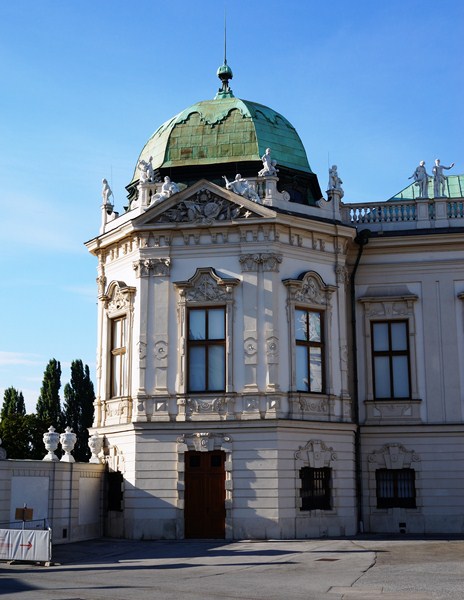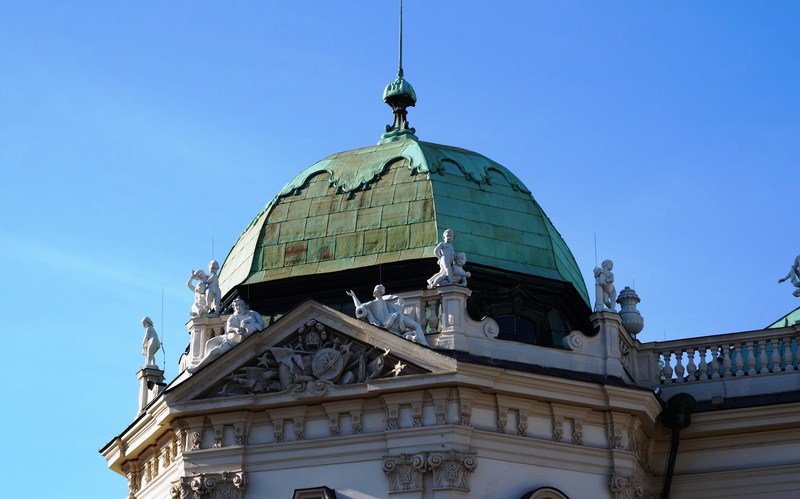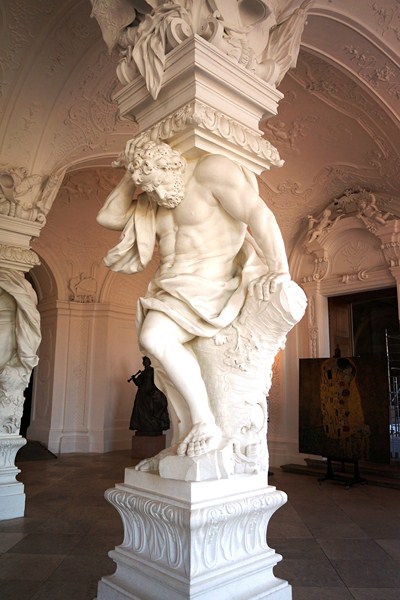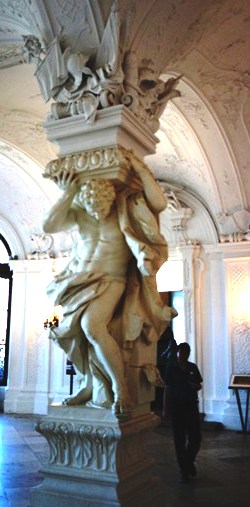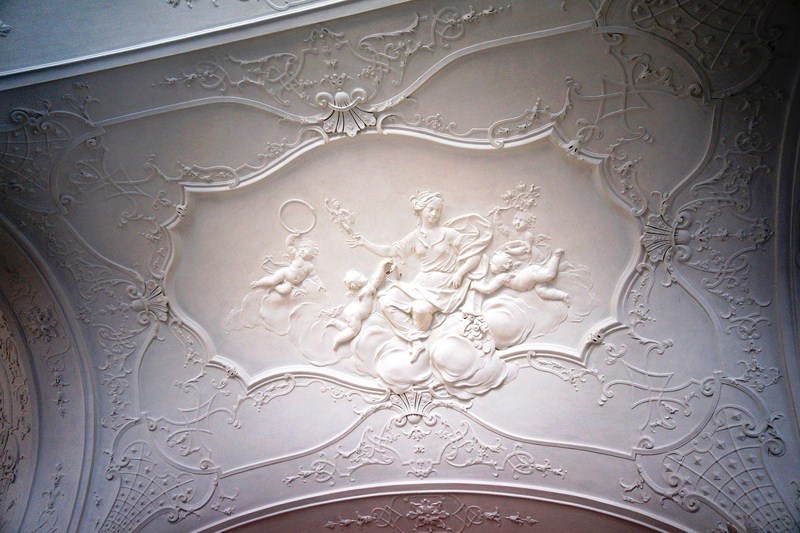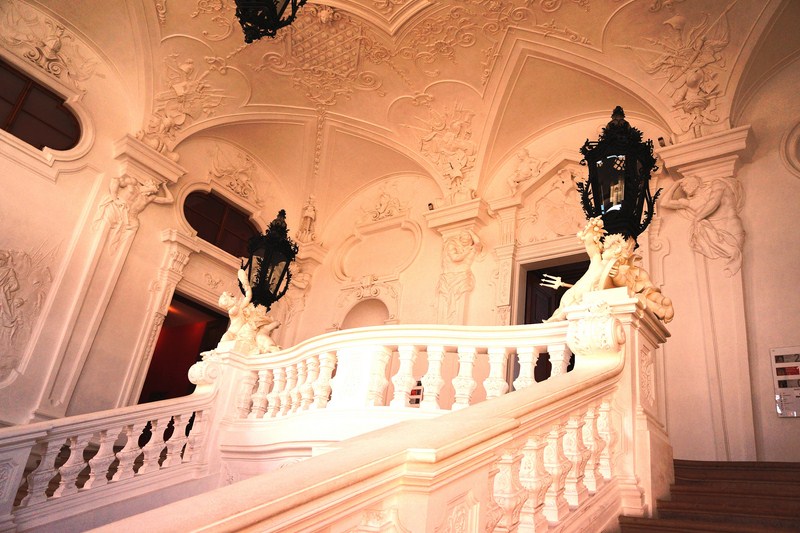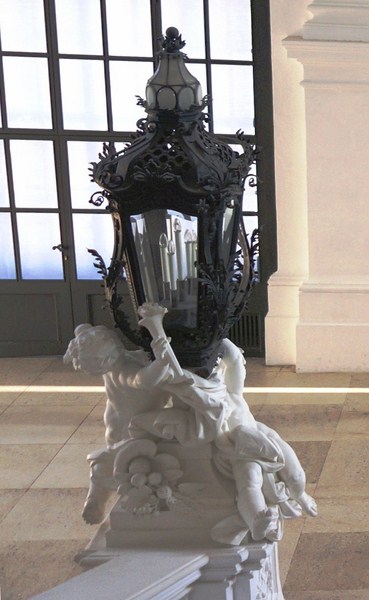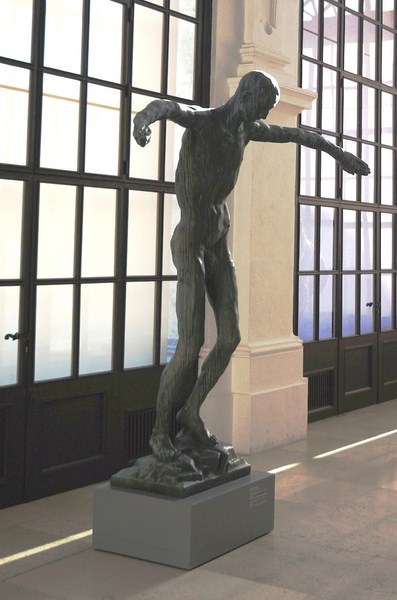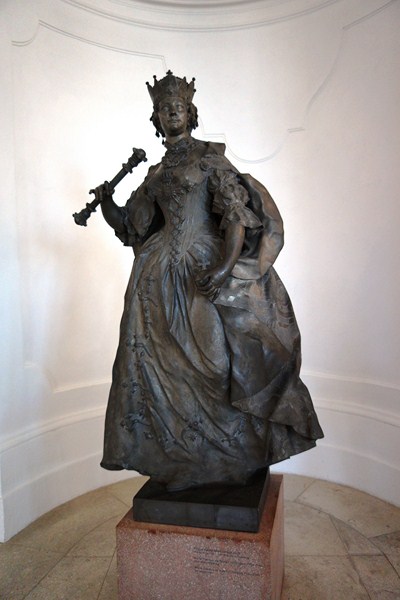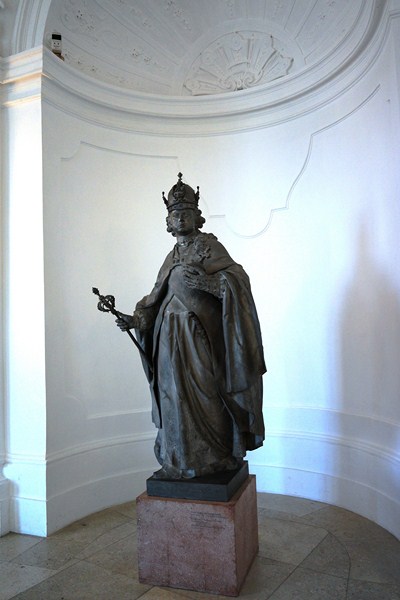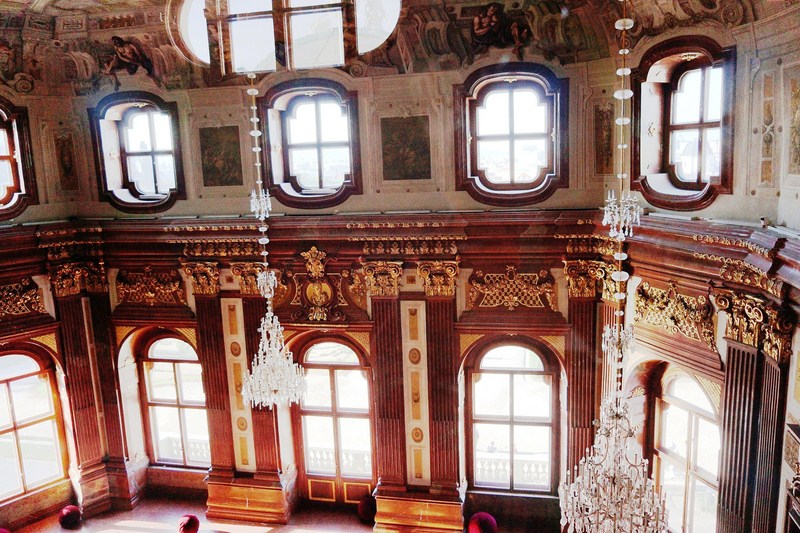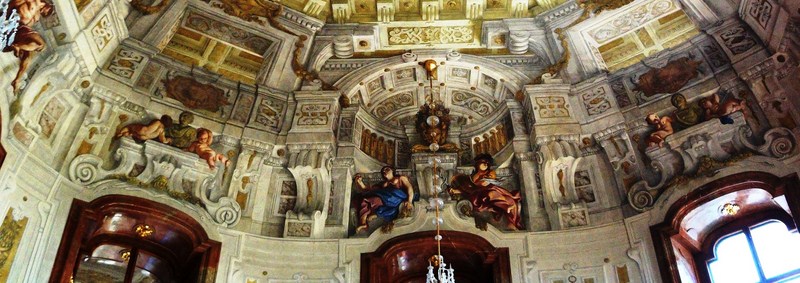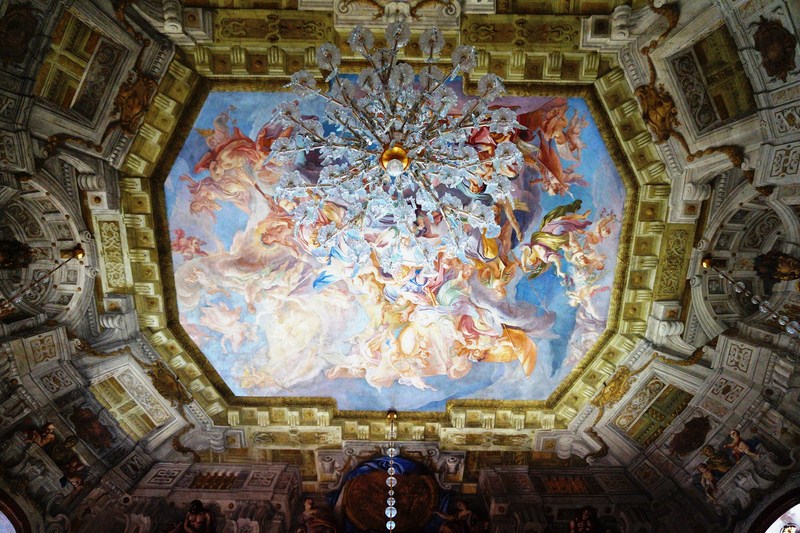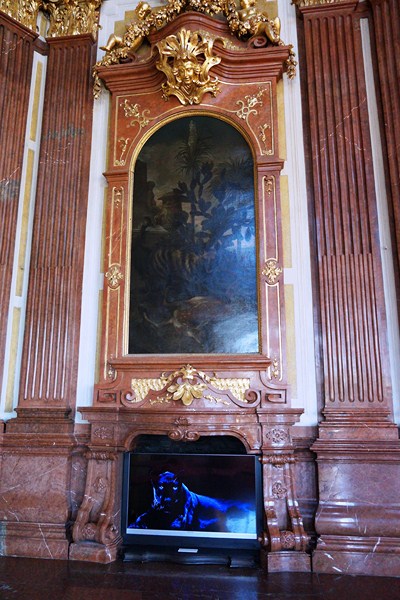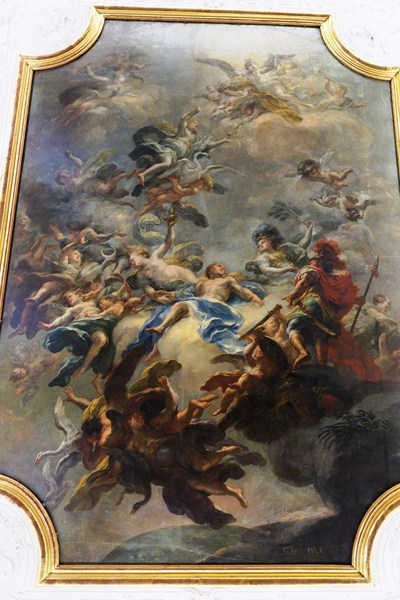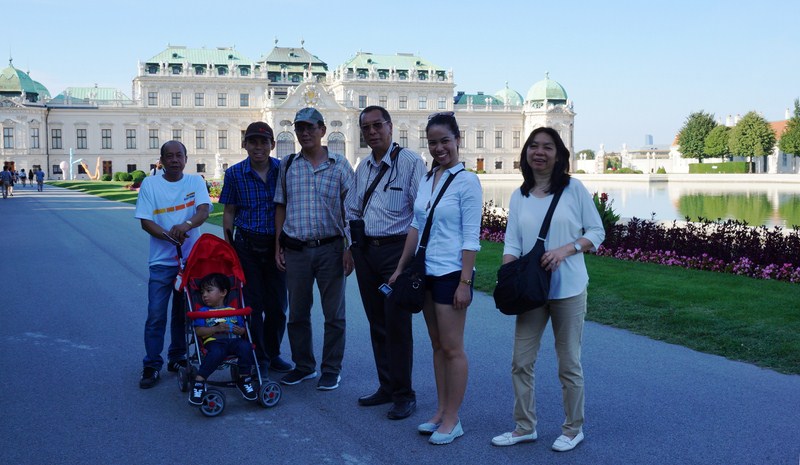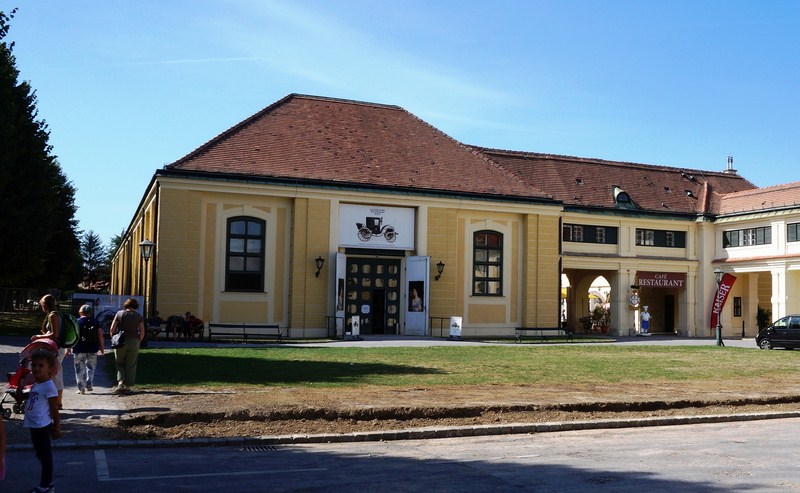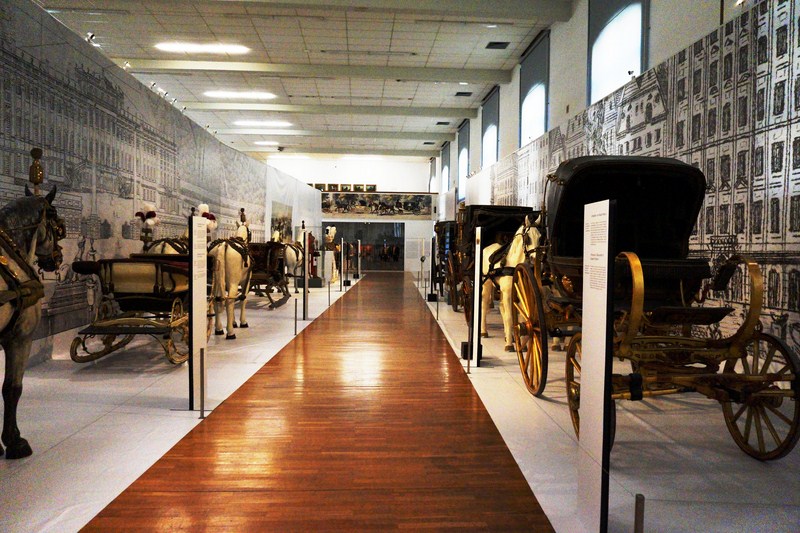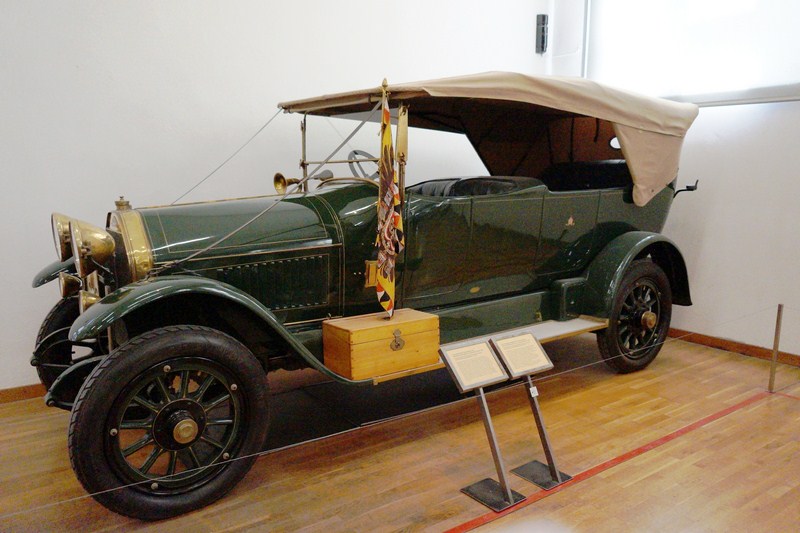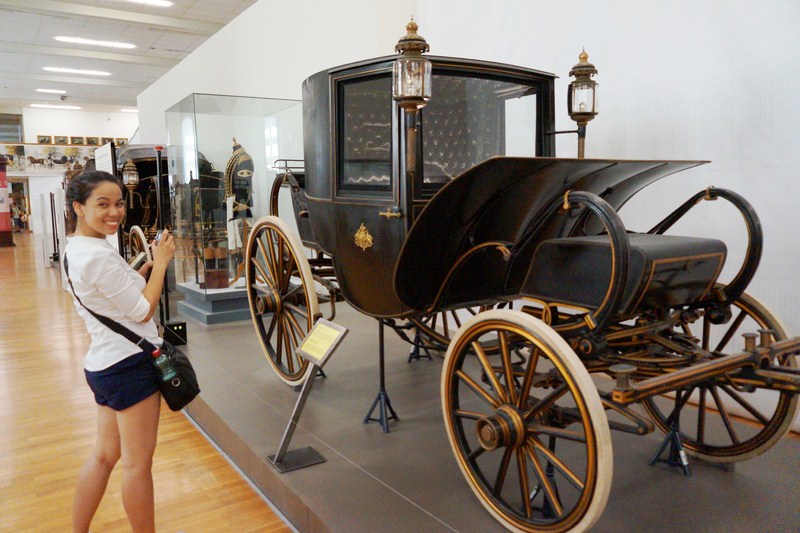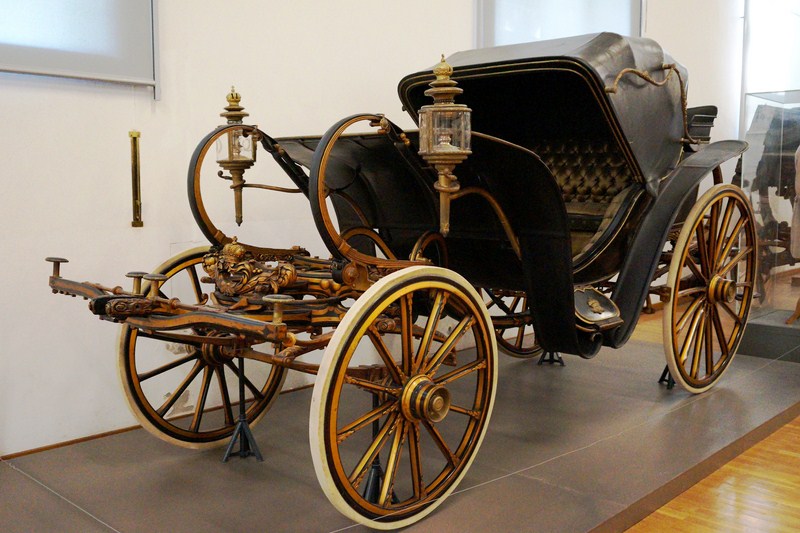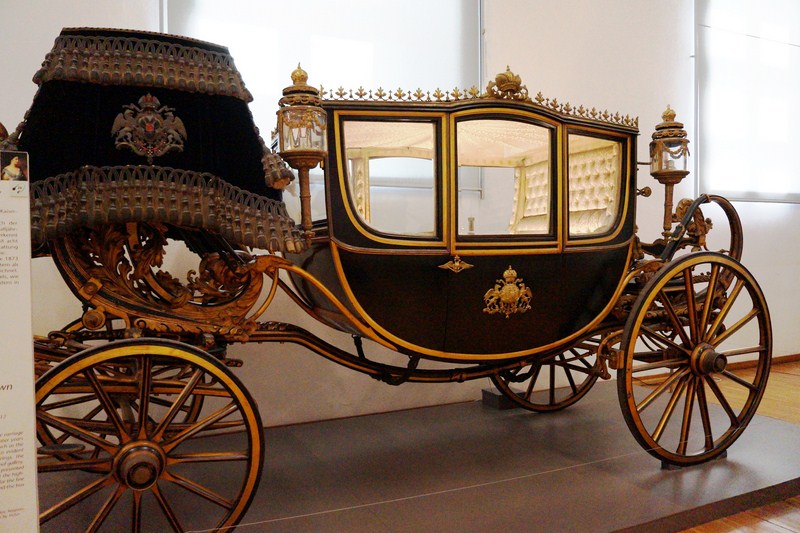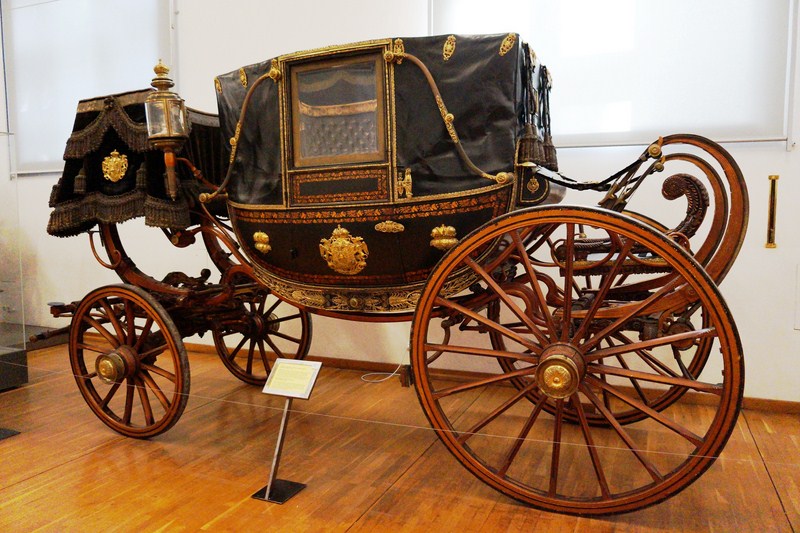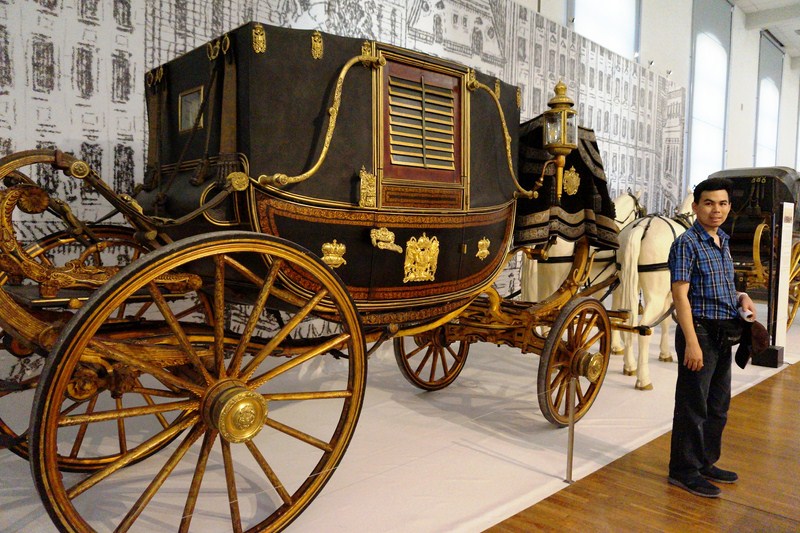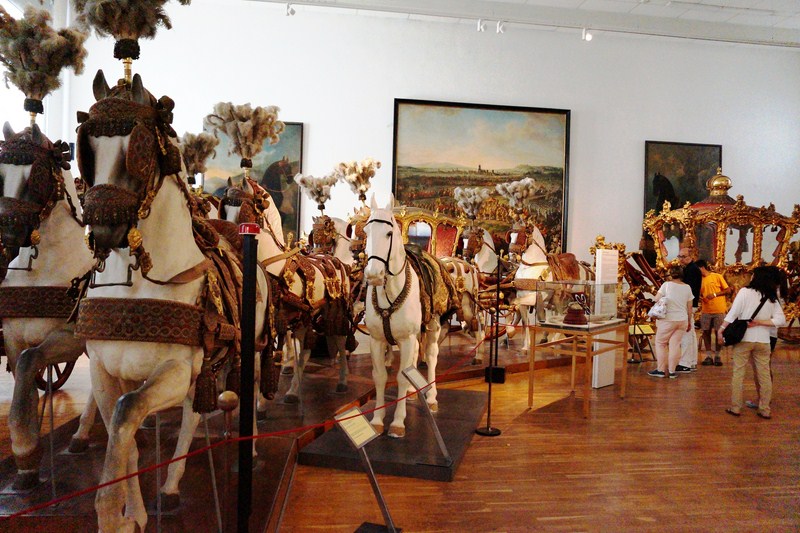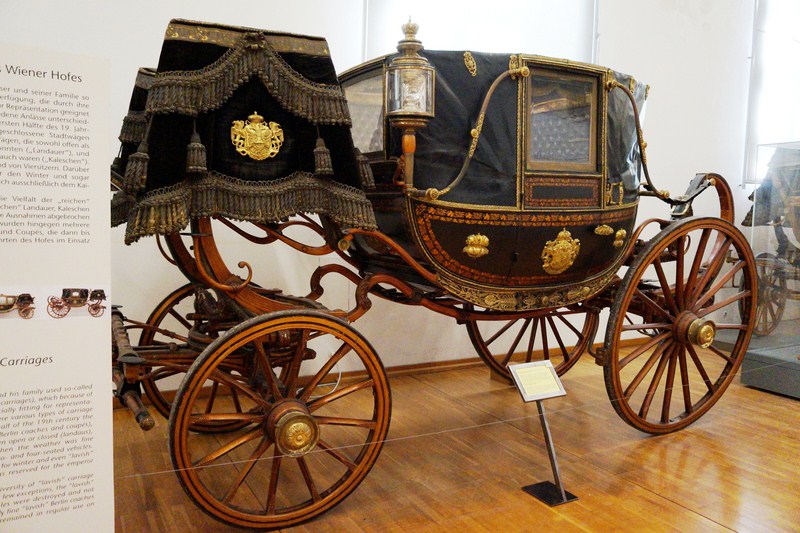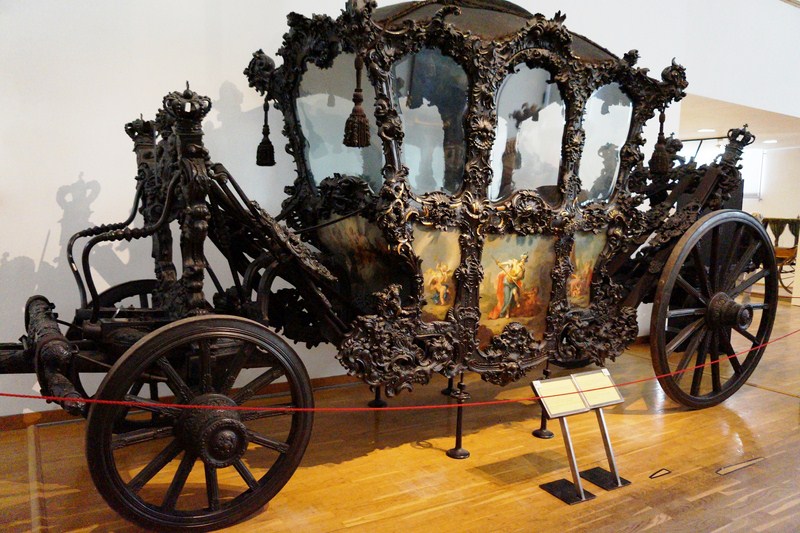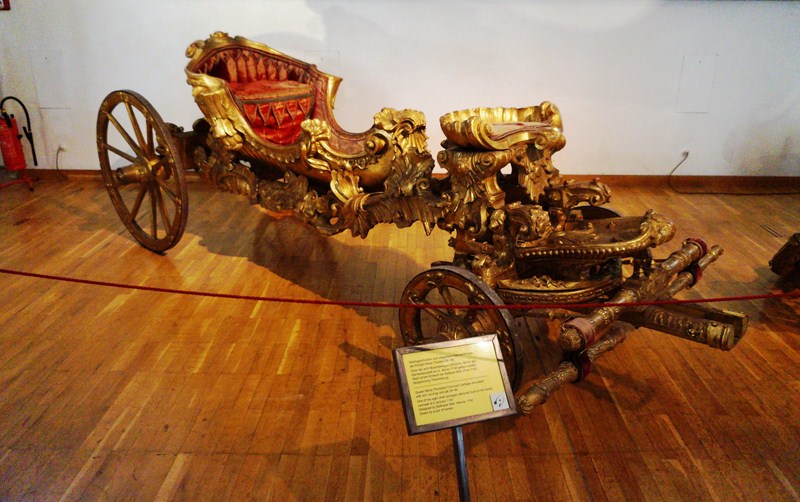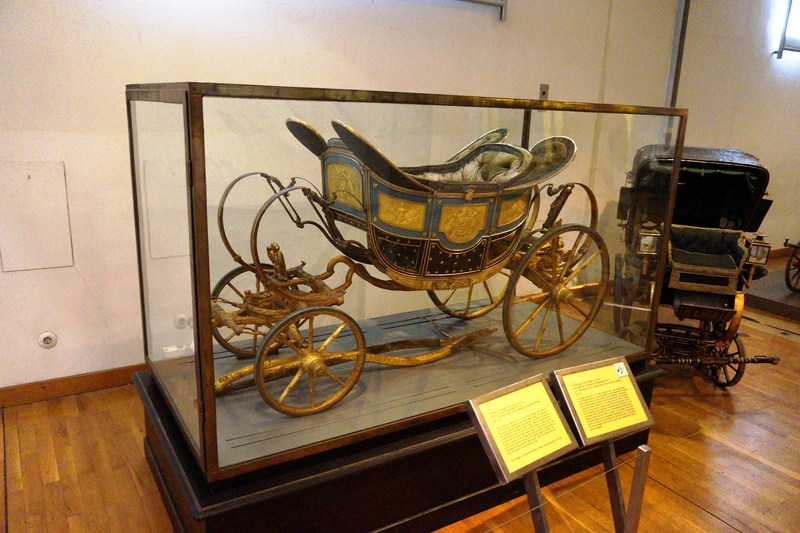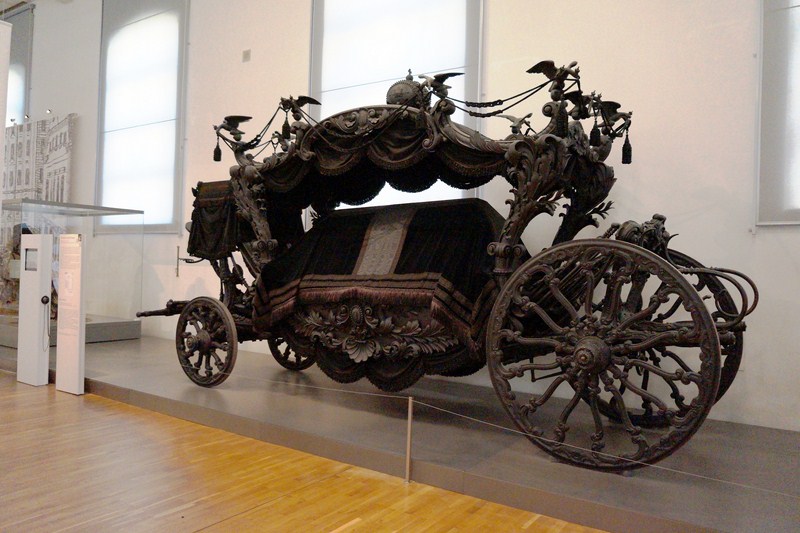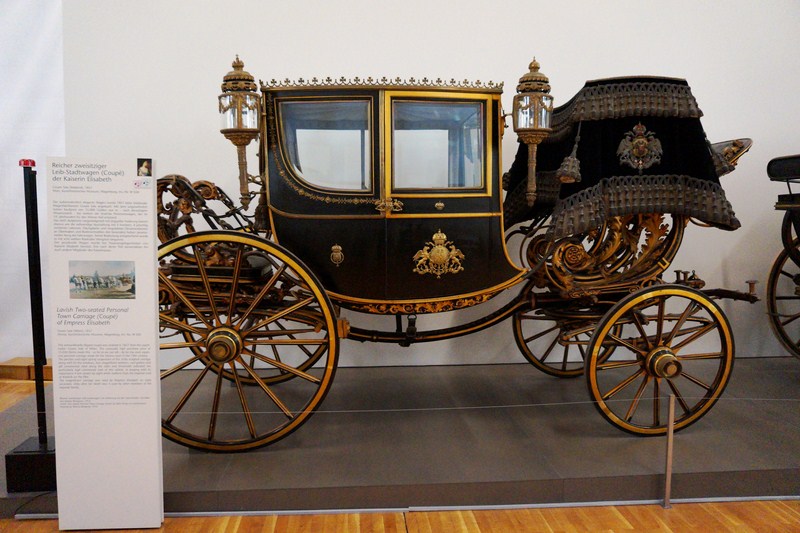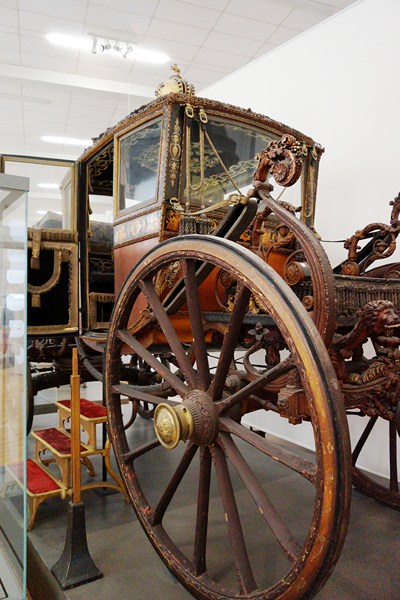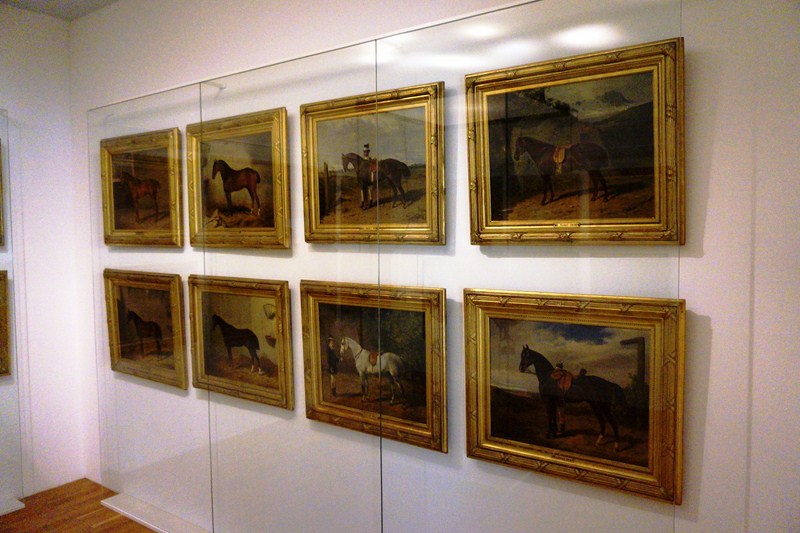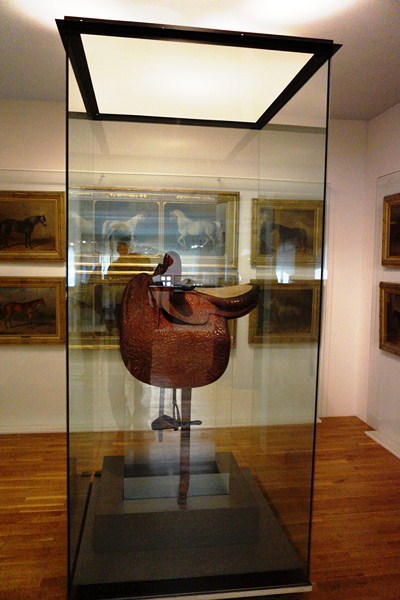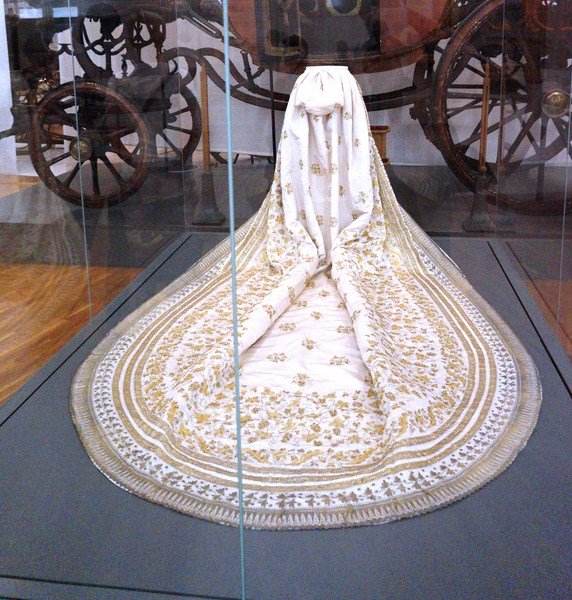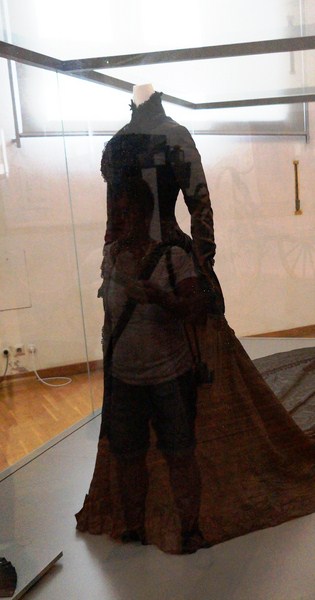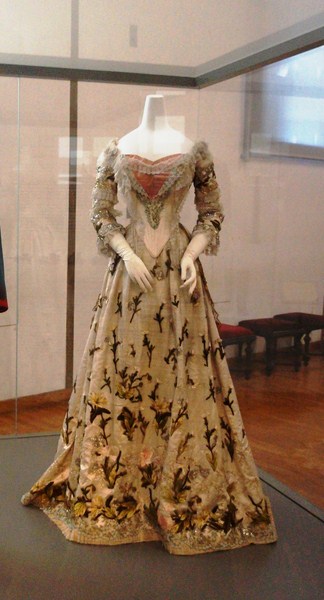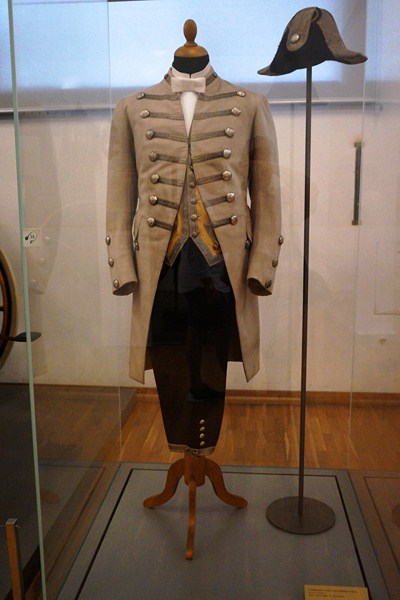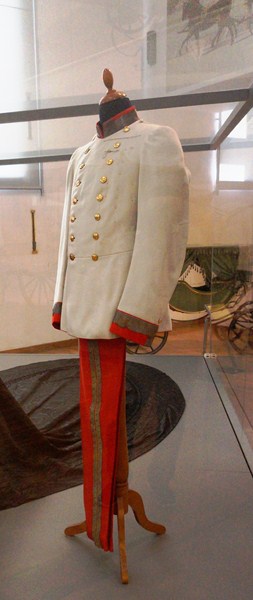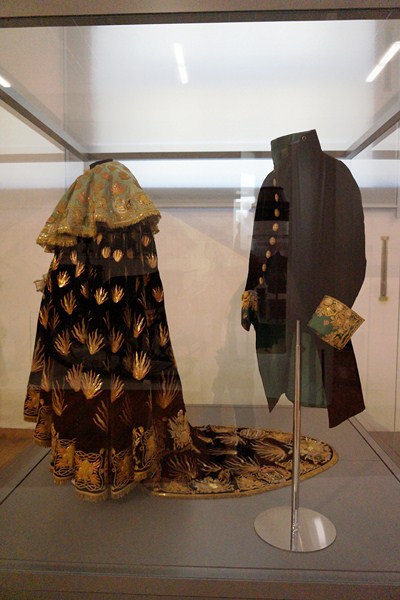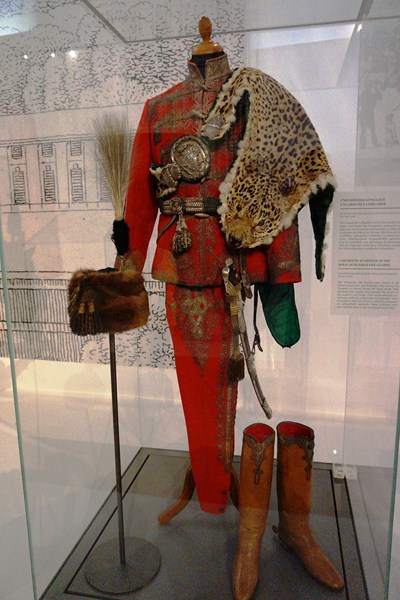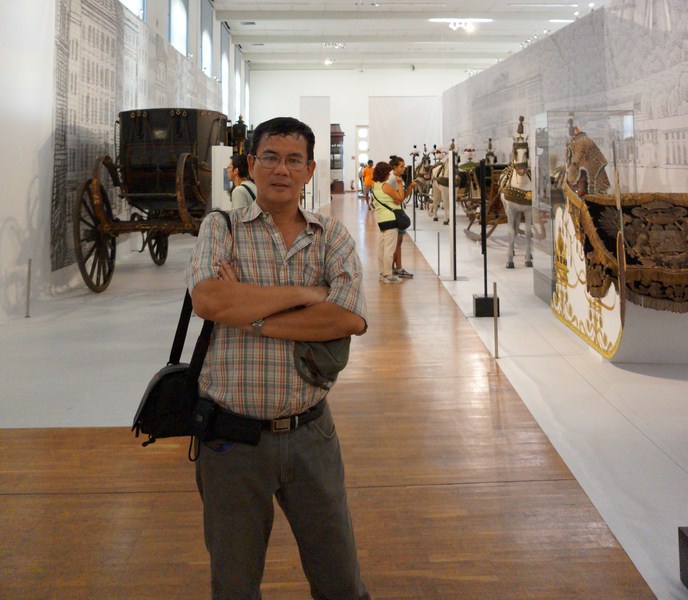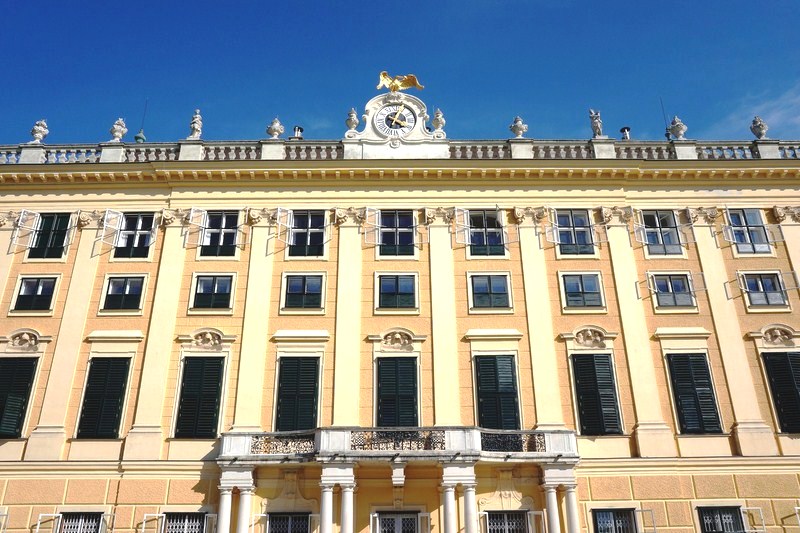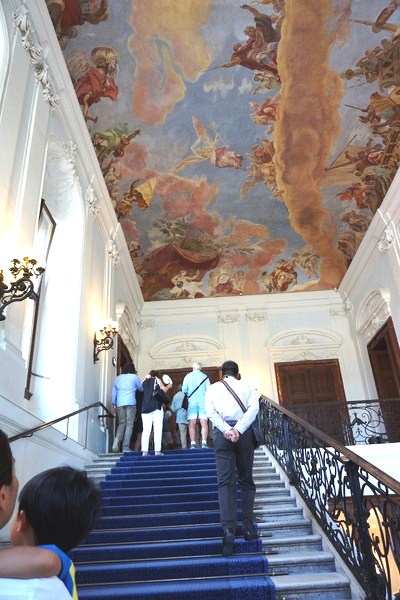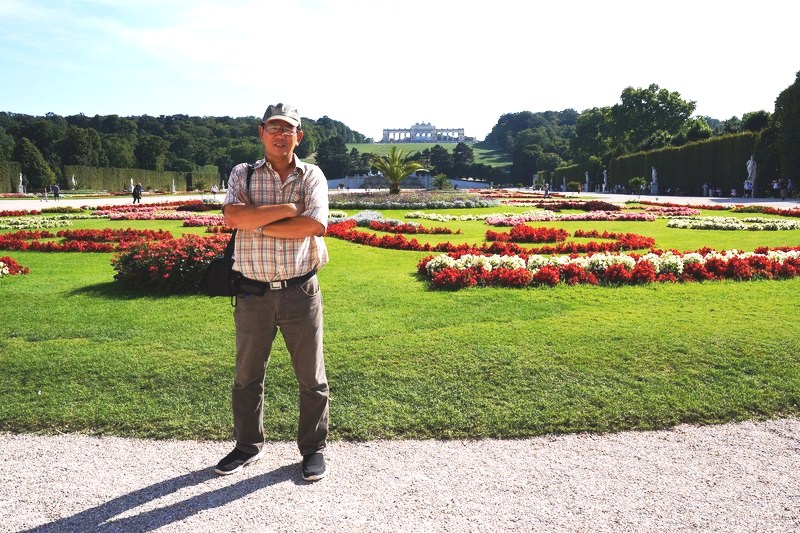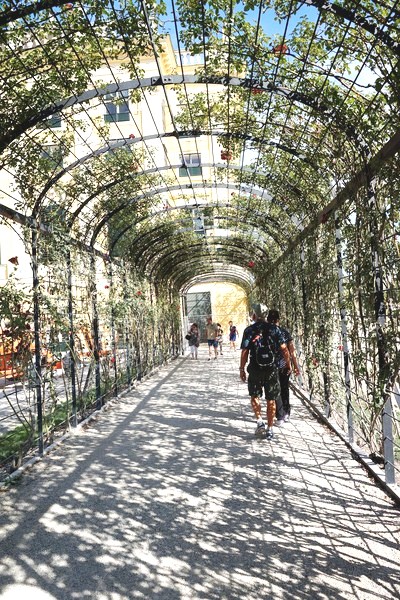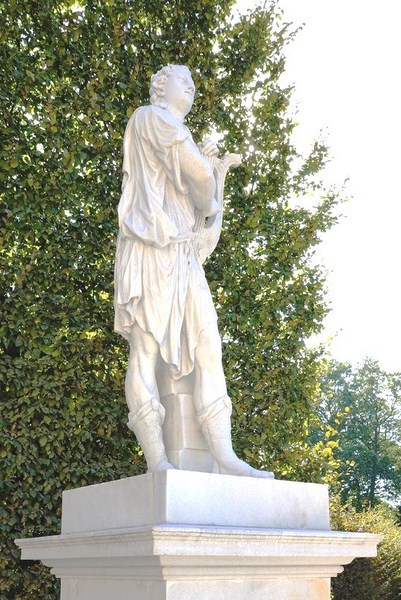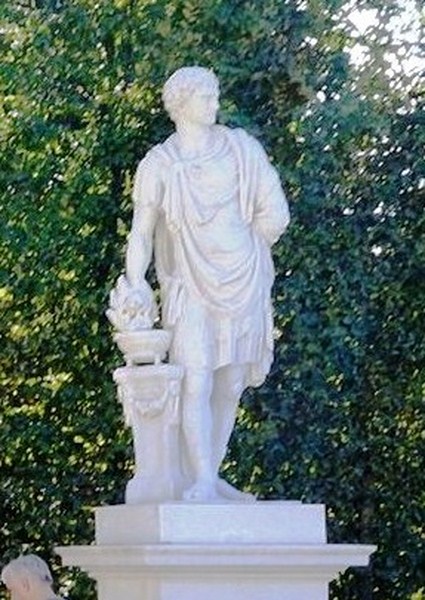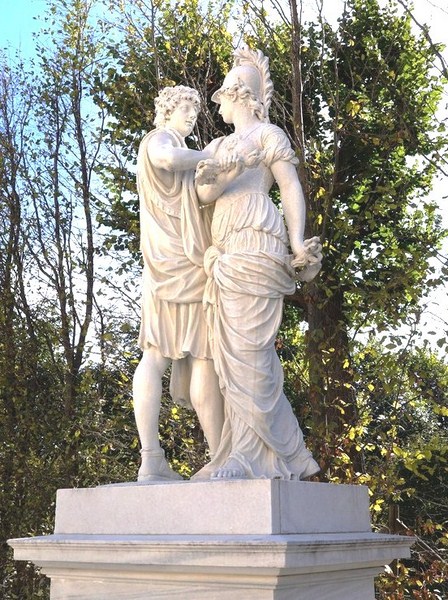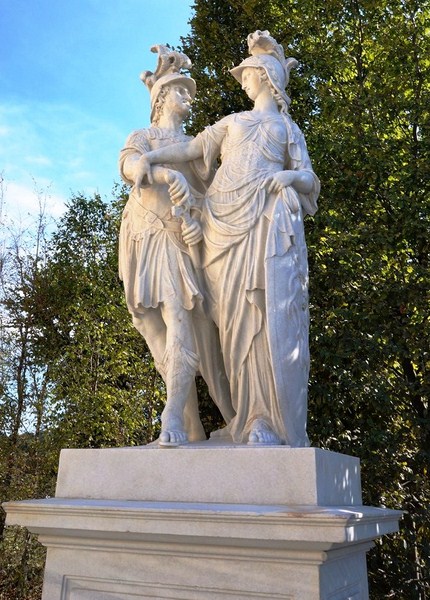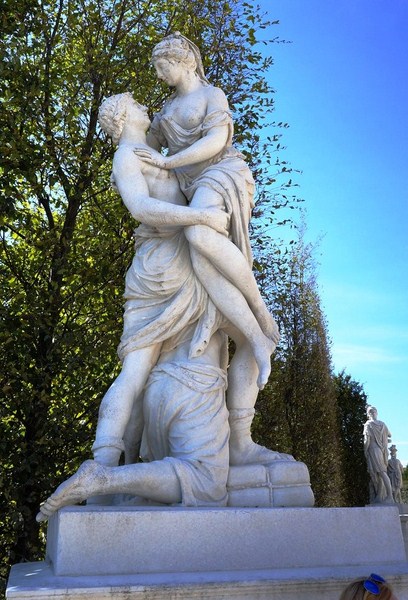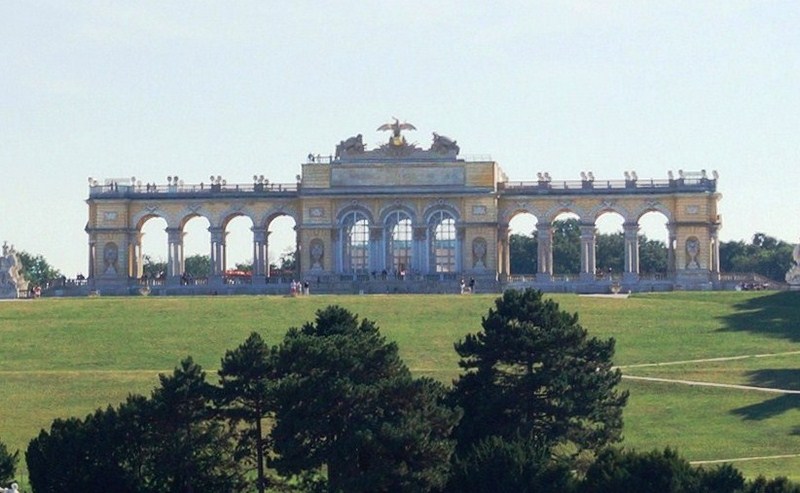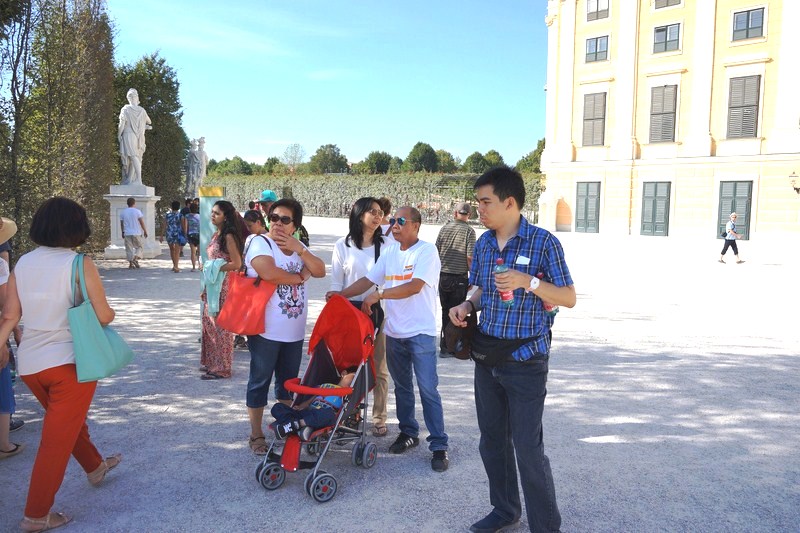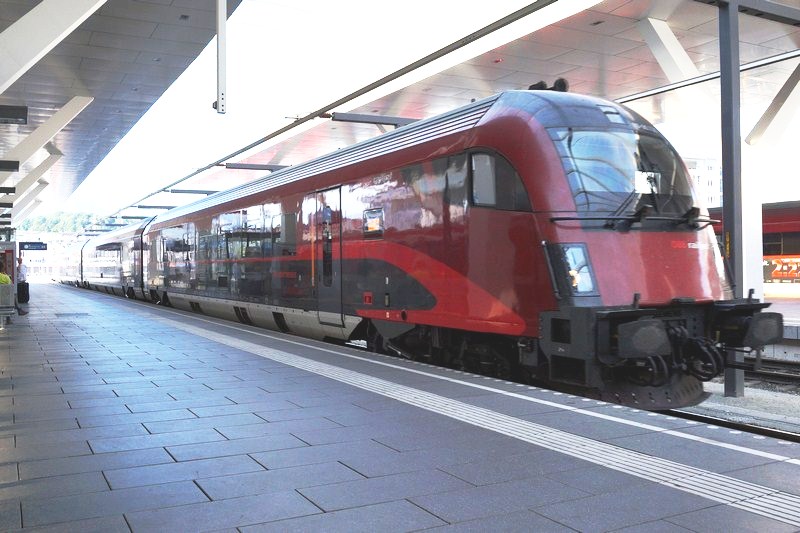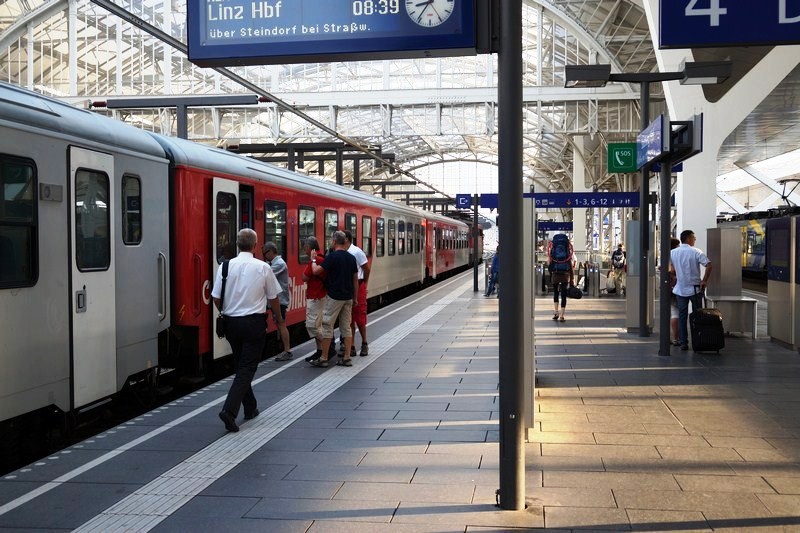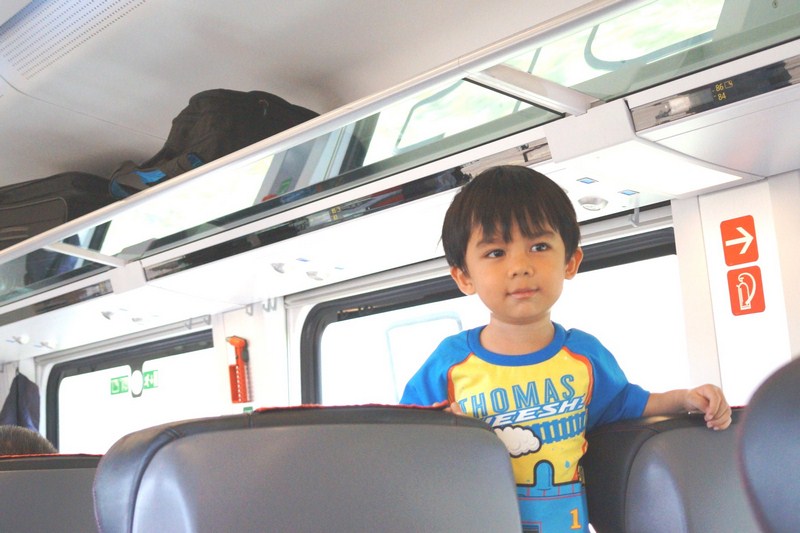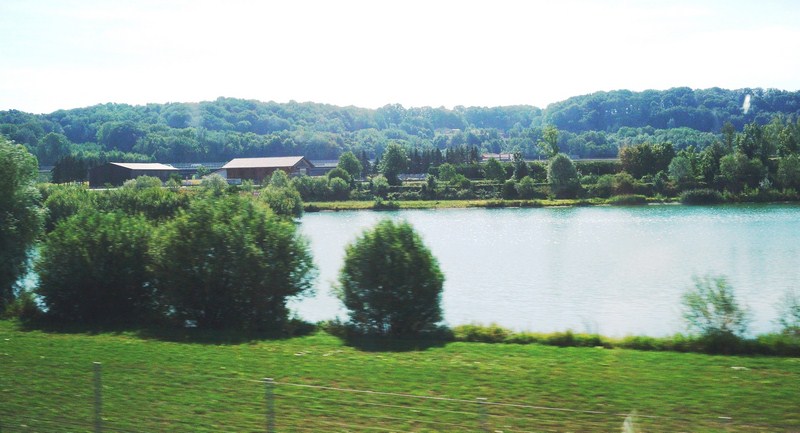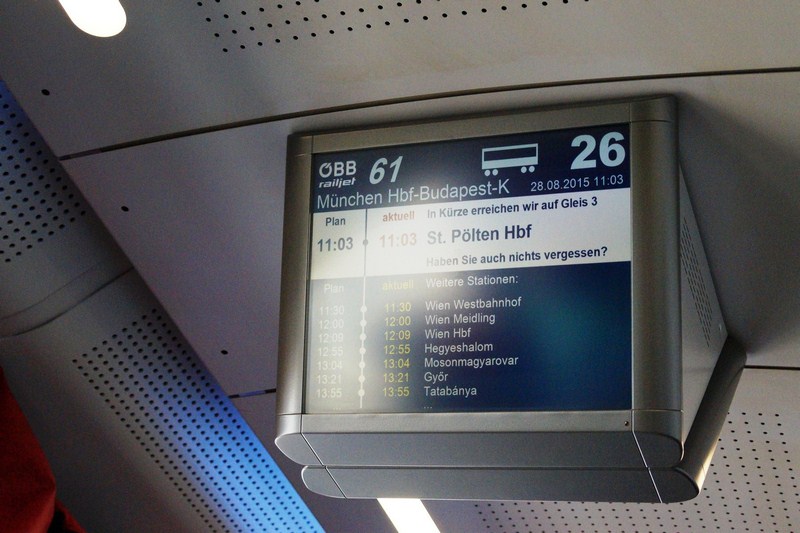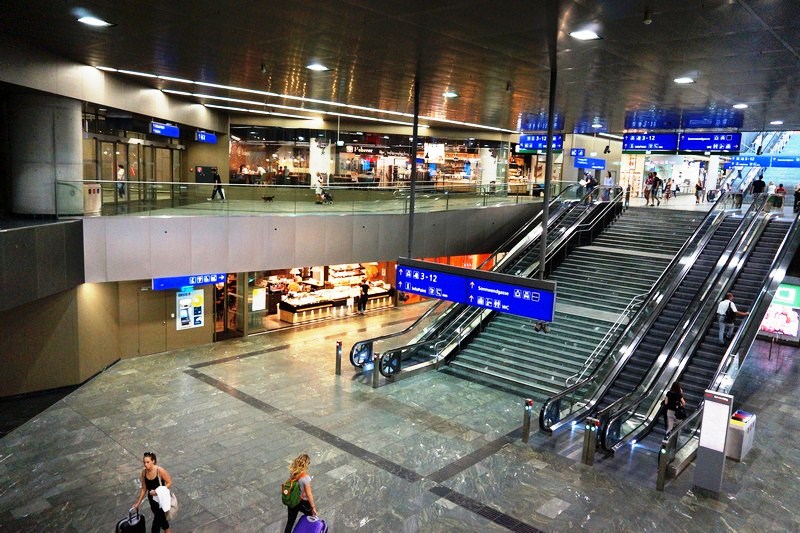The highlight of our tour of the Belvedere Palace, the summer residence of the great art patron and collector Prince Eugene of Savoy (1663–1736), was our tour of the Österreichische Galerie Belvedere (Austrian Gallery), an art museum housed in the Upper Belvedere, one of two palaces that make up the Belvedere.
Check out “Upper Belvedere“
Named as such in 1921, this museum houses an extensive and permanent collection which includes several thousand masterpieces from the Middle Ages and Baroque up to the 21st century contemporary art, focusing on Austrian painters from the Fin de Siècle and Art Nouveau period complemented by the works of international artists.
Further attractions at the museum include key works of French Impressionism and the greatest, outstanding and most important collection of Viennese art from the Biedermeier Collection as well as highlights of the Baroque and Medieval Collection.
The collection threw a fresh and exciting light on artworks by well known Austrian artists that includes the world’s largest collections of paintings by Ferdinand Georg Waldmüller and Gustav Klimt and the Character Heads by Franz Xaver Messerschmidt. Other Austrian artists with works displayed include Rueland Frueauf the Elder, Erika Giovanna Klien, Egon Schiele, Helene Funke, and Oskar Kokoschka.
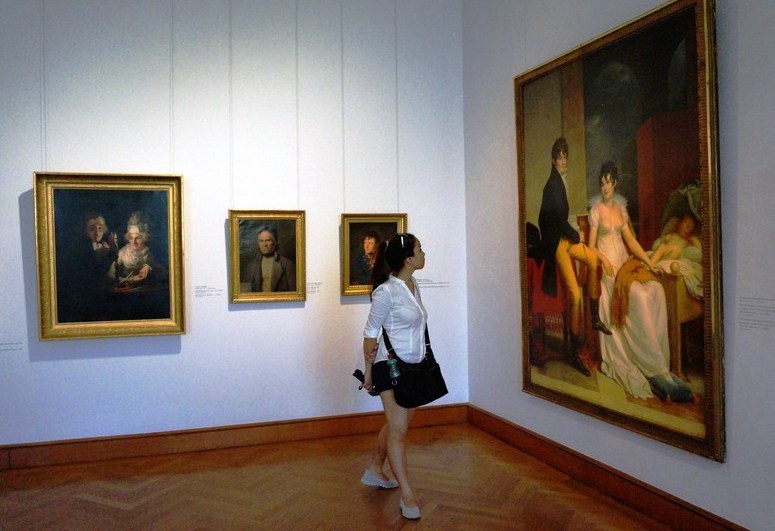
Cheska admiring “Count Moritz Christian von Fries and his Family,” an oil on canvas painting by François Pascal Simon Gérard
The museum’s display concept offered fresh approaches to these masterpieces of art through four innovative and thematically organized galleries (Austrian Baroque; Habsburg – Myth and Truth; Austria in Exile: Artists in Exile – Destinies in Dark Times; and Austria on the Move) that enlivened the path through the chronologically arranged periods of art in the permanent collection, sparking a multi-layered dialogue between the classics of art history and contemporary artists, for example Erwin Wurm and Christian Philipp Müller.
Conceived as a deliberate pause, the magnificent staterooms provides an opportunity to engage with, as well as focus on, issues and questions concerning Austria’s art, identity and history over the course of different epochs. An exciting interaction between past and present, we encountered and experienced an almost complete overview of the development of over 500 years of art history in Austria and, thus, an insight into the country’s history, rediscovering old favorites in a new context.
A section in the exhibition is dedicated to the tempestuous history of the Belvedere covering Prince Eugene’s building of the palaces, the foundation of the museum, the signing of the Austrian State Treaty, and its role today as a modern museum.

Gustav Klimt, The Kiss (Lovers), 1908–1909. Measuring 180×180 cms., the ornamental character of this masterpiece is enhanced with gold and silver. According to a contemporary rumor, the couple depicted is the artist himself and his lifelong partner Emilie Flöge. which was Bought in 1908 by the Moderne Galerie, Klimt reached the pinnacle of his “golden” phase with “The Kiss.”
At the Galerie des 19. und 20. Jahrhunderts (Gallery of 19th- and 20th-Century Art), I found works by the artists of the 1897 Secessionist movement. Most outstanding is Gustav Klimt (1862-1918), one of the movement’s founders. The heart of the presentation of “Art around 1900” is the collection of 24 of his works (portraits, landscapes, and allegorical scenes), the world’s largest collection of his paintings, which allowed us to trace the evolution of his style, from elegant portraiture (e.g. 1897/1898’s Sonja Krips), through to portraits with abstract elements (1906’s Fritza Riedler), impressionist landscapes (1907’s Flowering Poppies) and, of course, the golden pictures The Kiss (1907/08), his most famous painting, and Judith (1901).
Sharing almost equal billing with Klimt is Egon Schiele (1890-1918). The museum hosts some of Schiele’s masterpieces, including The Wife of an Artist, The Embrace, Death and the Maiden, and The Family (a self-portrait painted just months before his death in 1918 from Spanish flu; the expressions on their faces suggest that Schiele and his wife almost seem to know what’s coming).
Österreichische Galerie Belvedere: Upper Belvedere, Prinz Eugen-Straße 27, 1030 Vienna, Austria. Tel: +43 1 795 57-0 and +43 1 79557134. Open: 10 AM -6 PM. E-mail: info@belvedere.at. Website: www.belvedere.at. Admission (Upper Belvedere): €16 (adult)
How to Get There: take U1 going to Reumannplatz at Stephansplatz, exit at Hauptbahnhof, then walk.

